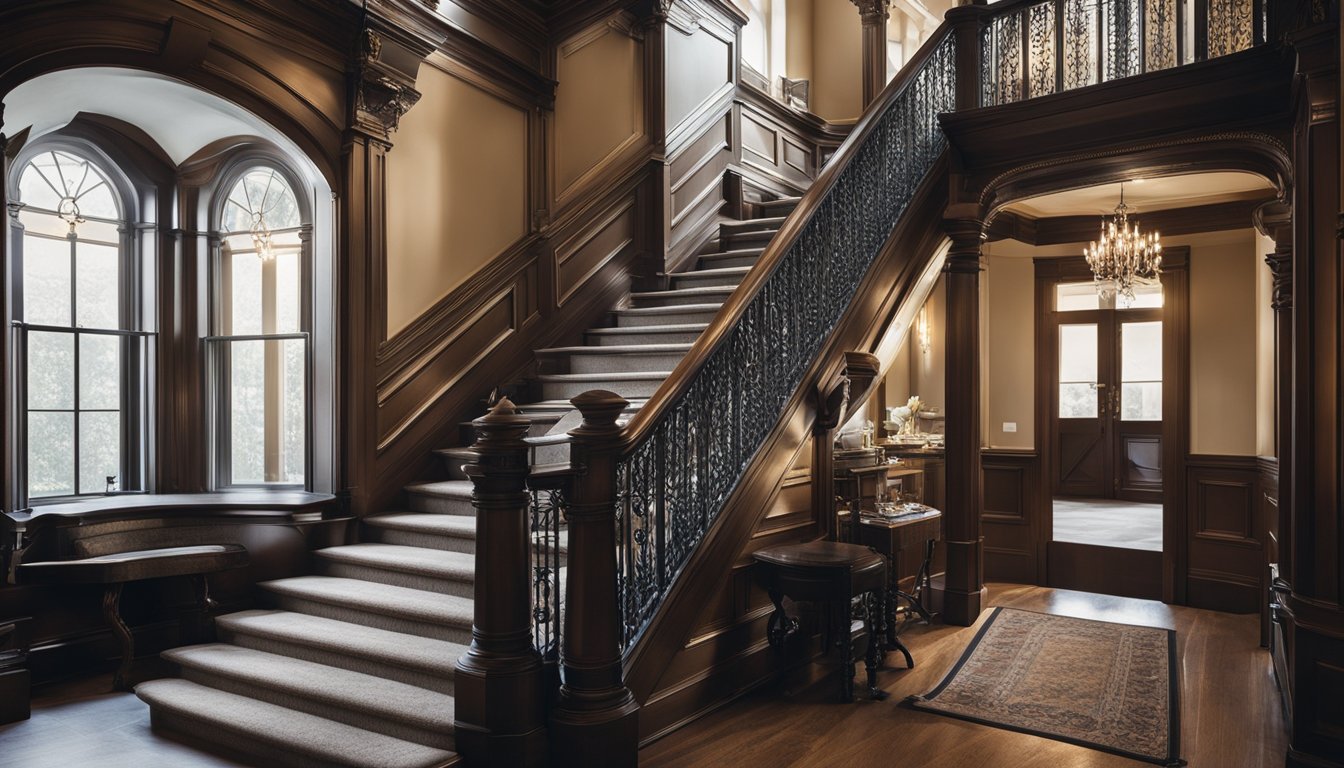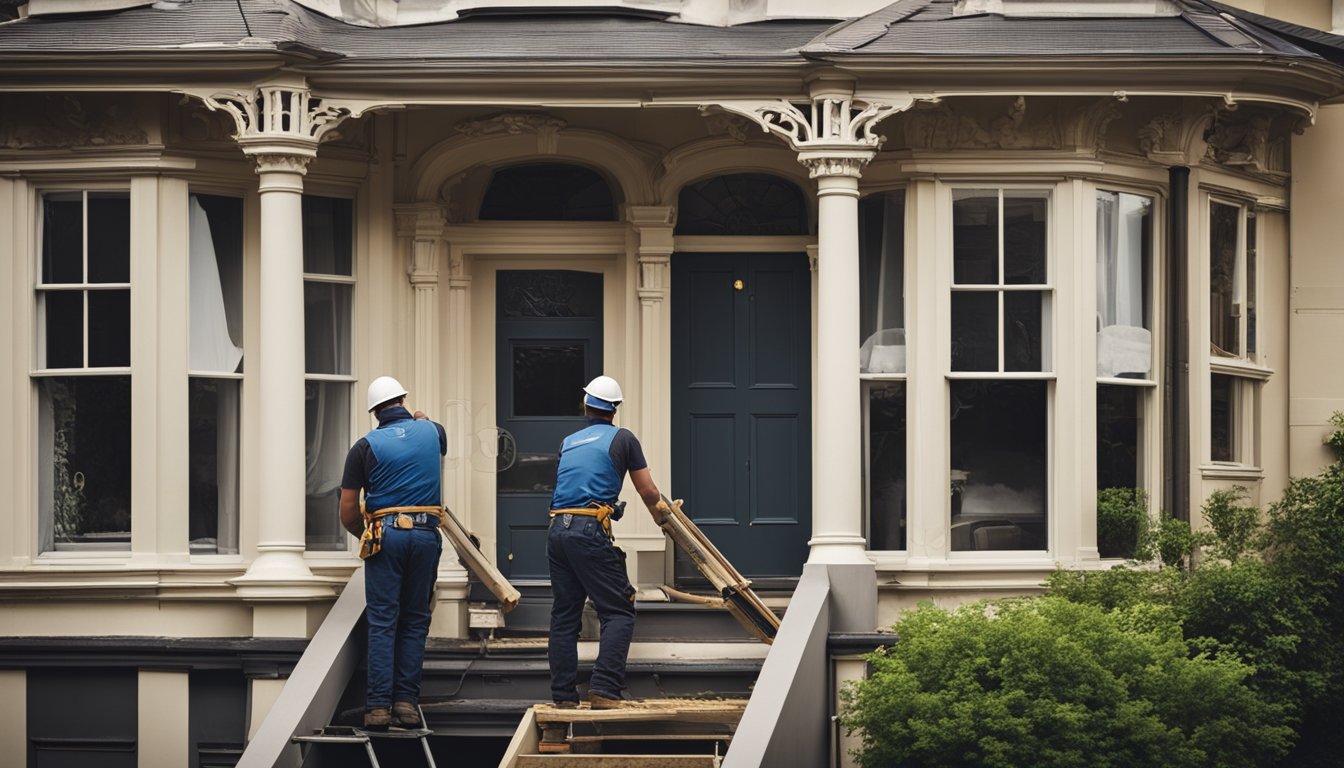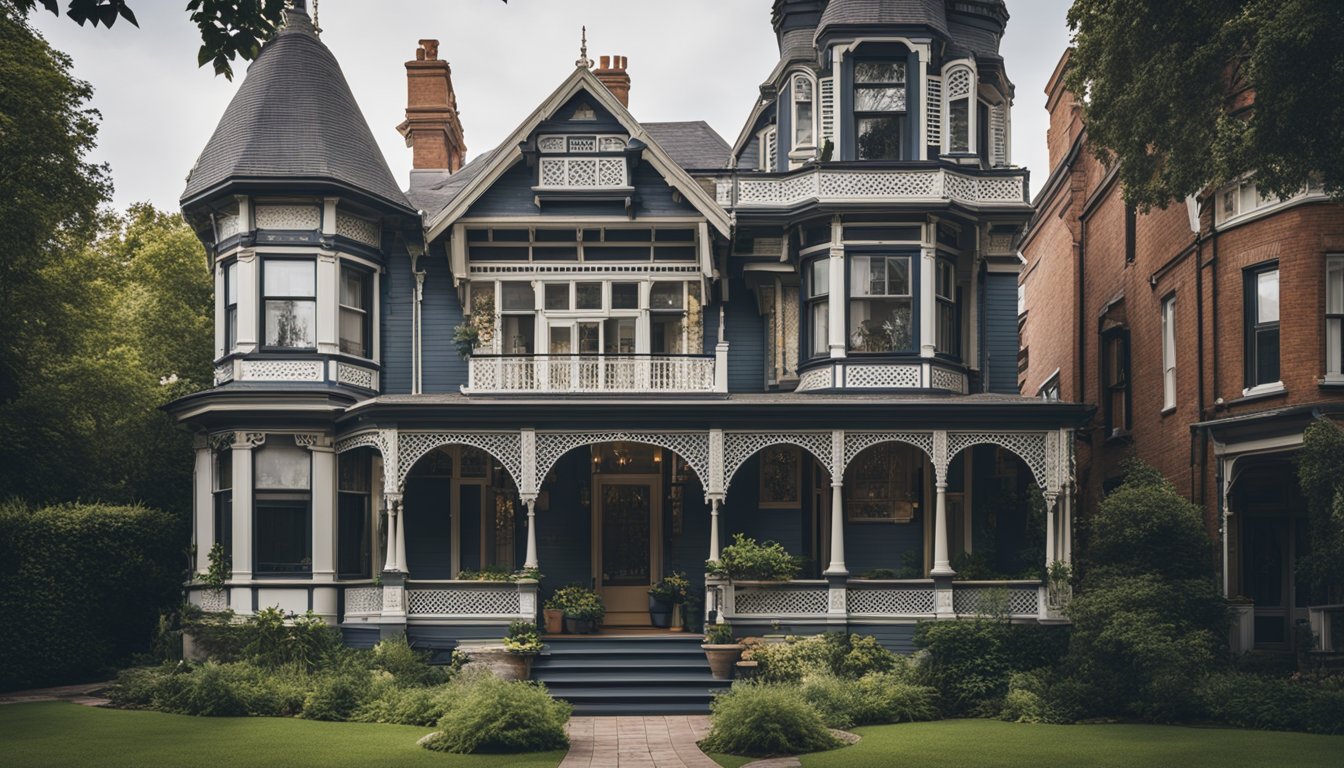Late updated: 08 Apr 2025 11:04
Written by: Daniel Harper
Smart Tips For Victorian Home Renovations: Expert Guide to Timeless Charm
Embarking on a Victorian home renovation is a unique and rewarding journey. With their distinct architecture and charming details, these historic houses offer an opportunity to blend the old with the new. Retaining the original features while incorporating modern conveniences can enhance both the aesthetics and functionality of your home. This careful balance ensures the timeless elegance of a Victorian residence is preserved.

Understanding the essential characteristics of Victorian architecture and design is vital before you start any renovation project. As we navigate through this guide, we'll explore how to prioritise areas that need improvement and how to make your space more practical. Whether it's updating the layout to better suit contemporary living or adding smart storage solutions, these strategies will help you maximise the potential of your home.
Renovating a Victorian home is about embracing its history while ensuring it meets our current lifestyle needs. This delicate task requires thoughtful planning and attention to detail to ensure both historical integrity and modern comfort. Stay with us as we uncover the smartest tips for making the most of your Victorian renovation.
Key Takeaways
- Incorporate modern elements while preserving original features.
- Prioritise practical improvements for optimal functionality.
- Blend historical charm with contemporary living solutions.
Essential Considerations for Victorian Home Restoration
In undertaking the restoration of a Victorian home, it's crucial to appreciate the nuances of its unique architectural style, maintain its historical integrity, and address any structural challenges.
Understanding Victorian Architecture
Victorian architecture is a stunning blend of intricate details and eclectic styles. These homes often feature ornate woodwork, iron railings, and elaborate facades. Recognising these elements is essential for an authentic restoration. Brick and stone are commonly found in the construction, lending both durability and beauty. We should pay attention to the presence of mouldings and decorative trims. A thorough examination of these features helps us preserve the character of the home while incorporating modern conveniences. It’s important to use materials that replicate the original ones as closely as possible to maintain authenticity.
Maintaining the Historical Integrity
Maintaining the historical integrity of a Victorian home requires careful decision-making. We must balance modern needs with the preservation of classic features. When restoring original features, like wooden floors or plaster mouldings, it is often best to repair rather than replace, ensuring the home’s authentic Victorian style is kept intact. Acquiring and matching historical colours and materials can also enhance the home’s historical feel. Any additions or updates need to complement the existing structure, rather than overshadow it, to preserve its historic charm. It's vital to consult with historians or architects specialising in Victorian homes to guide these decisions.
Identifying Structural Challenges
The age of Victorian homes means there can be significant structural issues. Common challenges include foundation problems, due to the age of the building materials like brick and stone. We should inspect and reinforce these materials where necessary. Water damage and mould can also be prevalent, often found around older iron fixtures or in damp basements. Careful assessment and remediation of these issues are crucial to ensure safety and longevity. Proper ventilation systems may be necessary to prevent future mould growth and maintain structural health. Regular maintenance of both visible and hidden areas helps prevent long-term damage and preserves the home’s beauty and function.
Interior and Exterior Renovation Strategies

Victorian home renovations can balance both preservation and modern improvement. By carefully considering the woodwork, windows, and overall design elements, we can breathe new life into these historic structures without sacrificing their unique charm.
Refurbishing the Original Woodwork
Victorian houses often boast exquisite original woodwork in materials such as rosewood and oak. It's essential that we maintain the character of these features while improving their durability. Stripping layers of old paint carefully reveals the wood’s natural beauty, which can then be restored with finishes that protect against wear.
Sanding and sealing are crucial to avoid damage while respecting historical value. Using gentle, non-invasive techniques preserves intricate carvings and designs, ensuring that we do not lose the artistic craftsmanship of the past.
Window Restoration and Replacement
Windows in Victorian homes contribute significantly to the building's aesthetic. When possible, let's aim to restore rather than replace. Refurbishment involves repairing rotted frames and ensuring glass panes are intact and insulated.
For those beyond repair, replacements should match the style and materials of the originals. Consider double-glazed options for energy efficiency without altering appearance. Implementing storm windows is a viable option that maintains historical style while enhancing modern comfort.
Choosing Appropriate Paints and Finishes
Selecting paints and finishes suitable for Victorian properties involves more than just colour. We must focus on sustainability and the appropriate finishes for durability and aesthetic appeal. Historically accurate hues can enhance the exterior, complementing features like siding and trim.
For interiors, soft washes and period-appropriate tones maintain the charm. It’s crucial to employ paints with low-VOC to safeguard health while being environmentally conscious. Enhancing the grain and texture of surfaces with specialised finishes can make a substantial difference, retaining the authenticity of the era.
Victorian Bathroom Remodelling Essentials
When remodelling a Victorian bathroom, the challenge lies in keeping period elements while adding modern amenities. Freestanding clawfoot tubs, exposed pipe showers, and pedestal sinks are some features we should preserve or reintroduce.
Incorporating contemporary plumbing and fixtures hidden beneath period-style designs maintains historical accuracy while offering convenience. Tile choices can reflect Victorian patterns yet accommodate heated flooring systems. Balancing these elements ensures the bathroom remains both stylish and functional.
Frequently Asked Questions

Renovating a Victorian home involves understanding budgeting, preserving historical elements, and adhering to regulations. Sources for period fixtures and fittings are pivotal. Grants and regulations for listed properties must be considered along with blending modern with original Victorian features.
What are the key considerations when budgeting for a Victorian home renovation?
Budgeting involves assessing the scope of work, sourcing materials, and planning for unexpected expenses. Costs can increase due to the need for specialised restoration techniques and materials. It's crucial to prioritise tasks and allow a contingency fund for unforeseen issues.
How do I maintain the historical integrity of my Victorian home while updating it?
Preserving historical integrity means retaining original features like mouldings, fireplaces, and windows. We advise consulting experts in historic renovation. Modern updates should be sympathetic to the original design, using materials and techniques that align with the Victorian aesthetic.
What are the best sources for Victorian-era fixtures and fittings?
Antique shops, online marketplaces, and specialist suppliers are excellent sources. Many businesses focus on reproducing authentic Victorian designs. Thorough research can lead to discovering salvaged pieces that suit your home’s period style.
Are there specific grants available for renovating historic homes in the UK?
The UK provides grants for listed building renovations through local authorities and heritage organisations. These grants can help cover the costs of maintaining and restoring historical aspects of the property. Eligibility criteria and application processes can vary.
What regulations must be followed when renovating a listed Victorian property?
Renovating a listed property requires adherence to strict regulations. Planning permission is essential for alterations that affect the building's character. It's important to consult with local planning authorities to ensure compliance with legal requirements.
How can I contrast modern comforts with the original Victorian features in my home renovation?
Blending modern comforts with Victorian charm involves subtle integration. We can introduce modern amenities in a way that respects the existing architecture. Use colours, materials, and furnishings that complement original features, ensuring any modern additions are seamlessly incorporated.
